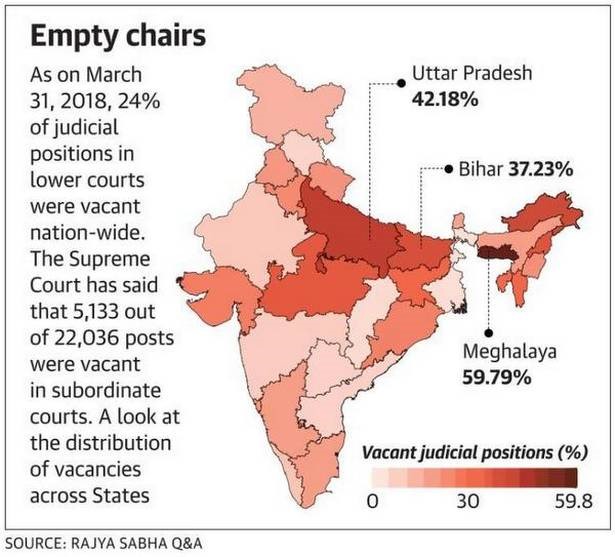7667766266
enquiry@shankarias.in
Why in news?
SC has pulled up various State governments and the administrative side of the High Courts for delay in filling vacancies in subordinate judicial services.
What does the court find?

How does the appointment happen?
What are the concerns?
What should be done?
Source: The Hindu